I like swords. Yes, it's true—I love sharp weapons that could possibly kill me with one slip-up. But I don't tend to think of that too often. And not only do I love swords, but I collect them, too! I have all kinds of weapons, and I will show you a few of them. I'm not quite sure why I love weapons, but it probably ties in with my love of fantasy and medieval history. I feel using guns is a dumb way to fight wars, and I think using a sword requires a lot more discipline, strength, focus, and agility than a gun. It takes much more skill to wield a sword—or other medieval weapon—than it does to wield modern day weapons, giving me a sense of power and accomplishment after I practice with my weapons.

Some of the things I do are: swing swords around, shoot arrows from bows, throw throwing knives, throw shurikan (ninja stars), and run around my backyard doing all those things at once. I have a variety of weapons including swords, bows, throwing knives, shurikan, daggers, machetes, and a flail (spiked ball and chain)!
Swords are amazing. Forged out of the sweat and blood of many a blacksmith, swords were perhaps the first lethal weapon (after the club, of course). Forging a sword was no easy thing. First you needed a nice, hefty chunk or steel or iron. Then, using a pair of tongs, the piece of metal was softened using extreme heat, the usual method of this being to drop the chunk of metal into a furnace. Next the piece of metal was pounded into the desired shape of your sword. After that, the sword was cooled repeatedly until you had the basic shape. Then the sword was hardened, by heating the sword to extreme temperatures, then thrusting it into a bucket of water. Other things could be added, such as a hand guard and leather to cover the hilt. This process usually took about 9-12 days to make one sword. Japanese swords, or katanas, were similarly made, though sword making in Japan was considered a sacred art, and so the process was slowed to allow time for various rituals.
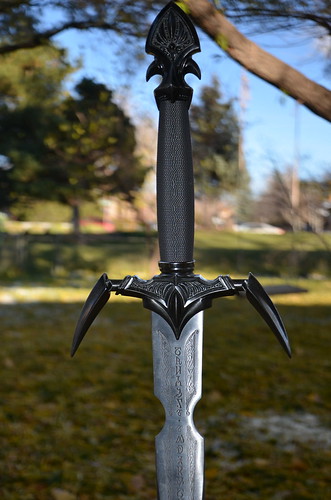



This is my favorite sword. I got it at a pawn shop as my second sword and immediately went home and fawned over it—polishing it until it sparkled. It has remained my favorite ever since. Strange runes are inscribed on the blade—its language still unknown to me. Made entirely of steel—even the hilt is wrapped with small chain-like strips—it is sturdy, and, despite its dull blade, it is a battle-ready sword.

This is my Japanese katana. I actually train with this sword in karate, learning from my sensei (or teacher) who is a black belt in weapons and karate. He has taught me much over the two years I have trained with this sword.
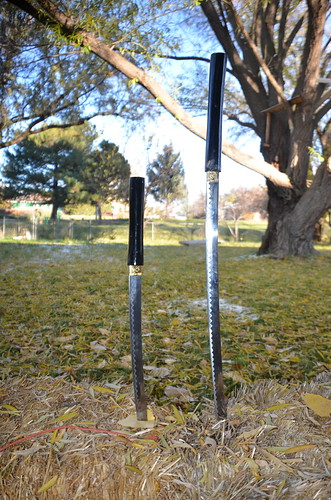
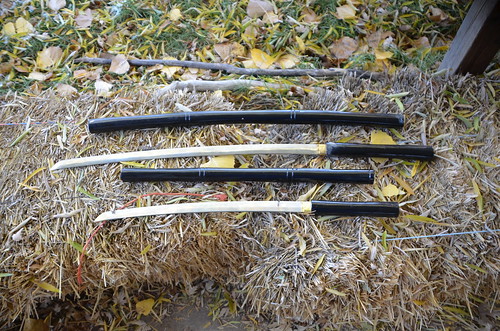
These two swords are also Japanese swords, the longer one being a katana and the shorter one being a wakizashi, or short sword. I was given these at for my birthday by one of my friends. Their origins are unknown.

This sword was my very first sword. Despite being wobbly and undependable, this Victorian style sword is special to me because it was my first sword, and because of its intricate design. With a silver hilt shaped like the head of a cougar and studded with glass jewels, this sword is beautiful to behold.
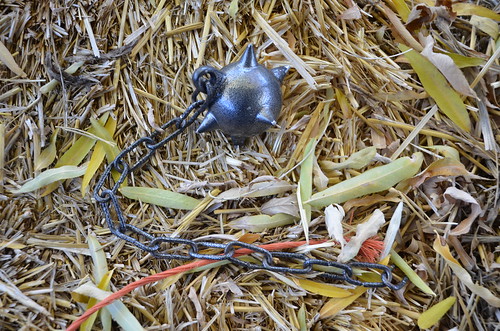
This is my flail. Looks kind of nasty, huh? Turns out this was one of the most brutal weapons in the Middle Ages, and was extremely difficult to use. Its smallness is deceptive for it is extremely heavy. I am still trying to find a handle for it, but even with a handle I would probably not be able to use it. Imagine swinging this into your face while practicing!
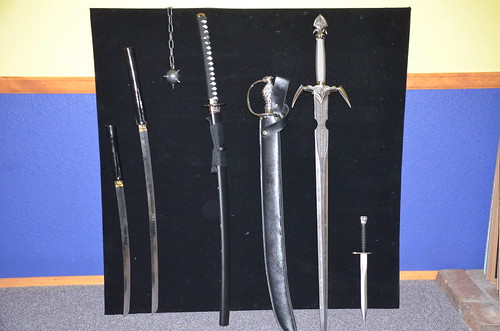
These are all of my favorite weapons. I love them!
Jackson Duckworth is a member of the Youth Travel Blogging Mentorship Program
All photos courtesy and copyright Jackson Duckworth
One traveler's sword collection - history and how to use them
Posted by:
Jackson Duckworth
